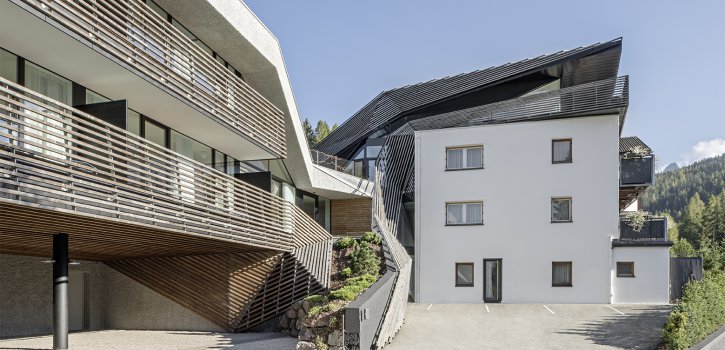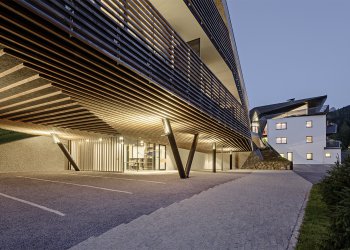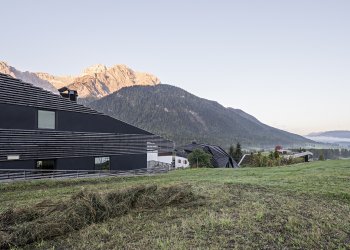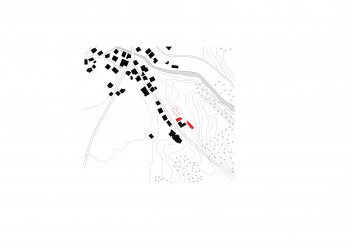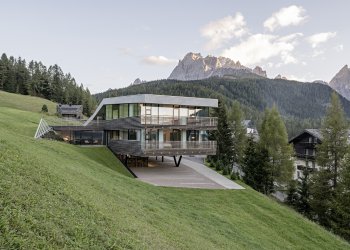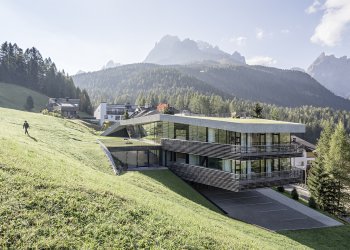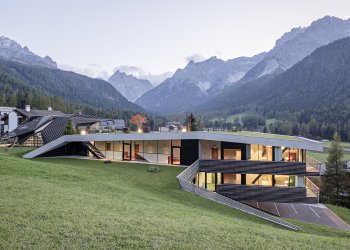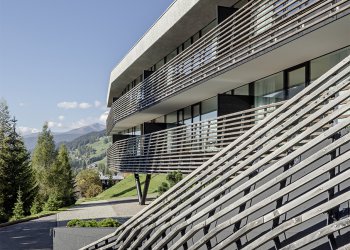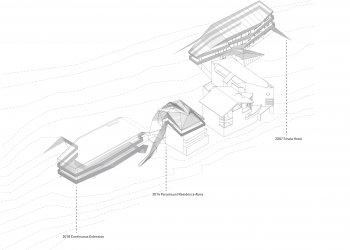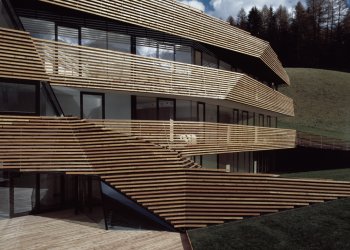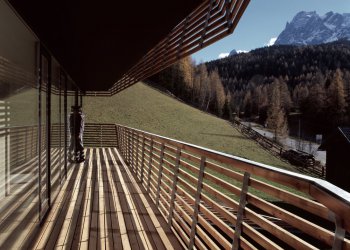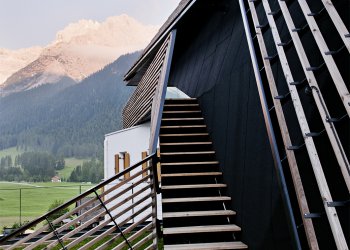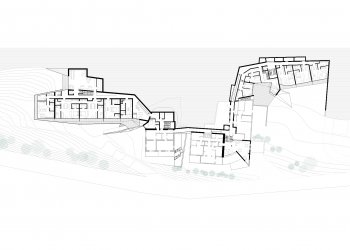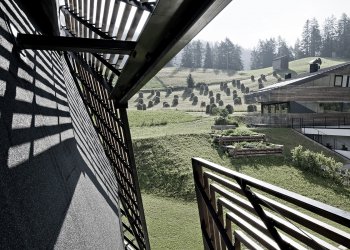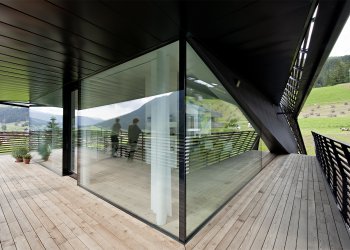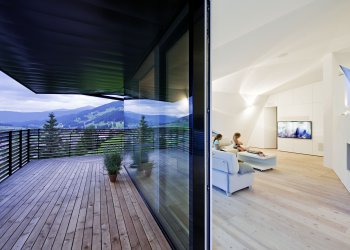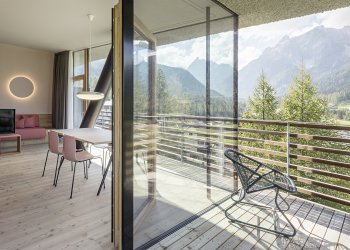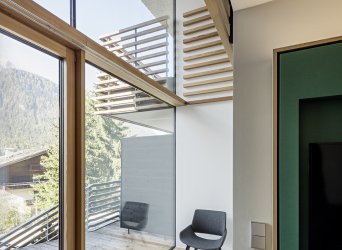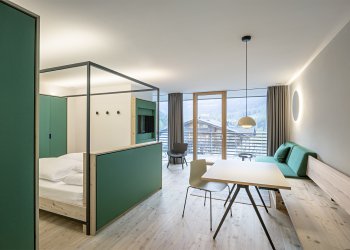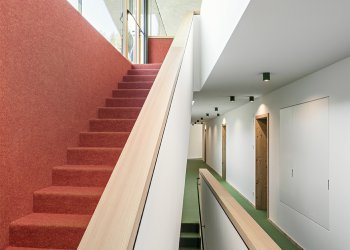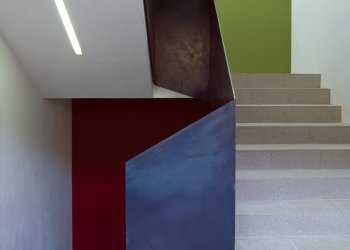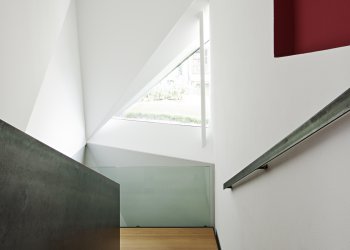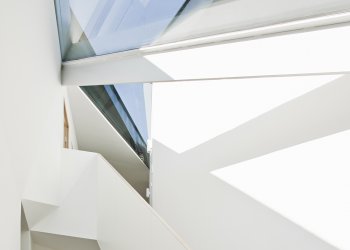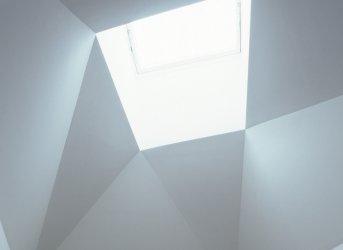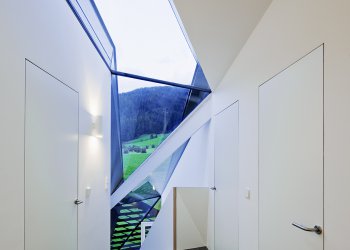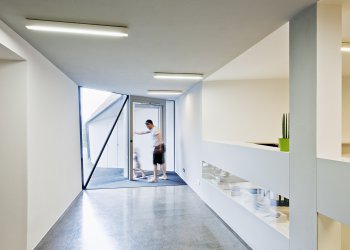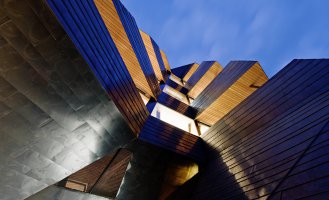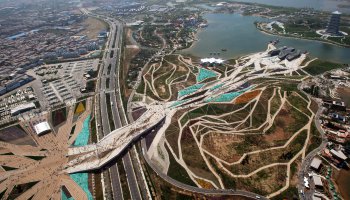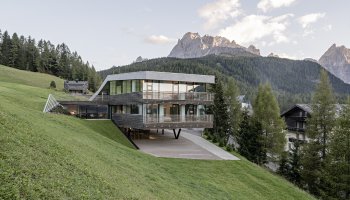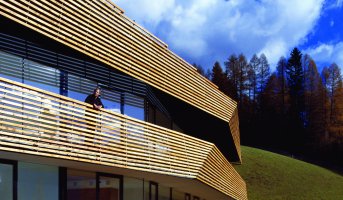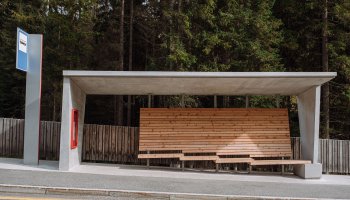The dialogue between the building and the topography, the concept of using the same materials, the faceted wooden slats enveloping the volumes, and the luminous interiors with distinctive chromatic accents are the guiding principles of Strata Hotel (2007), Paramount Alma (2014), and Continuous Extension (2018).
Strata – Paramount Alma – Continuous Extension
TYPE Hotel, Interior
STATUS Commission, Built
LOCATION Sesto, Italy
YEAR 2007 (Strata), 2014 (Alma), 2018 (Continuous Extension)
CLIENT Strata: Judith Rainer & Christian Schwienbacher (Strata), Christoph Rainer (Paramount Alma & Continuous Extension)
DESIGN TEAM Claude Ballini, Eva Castro, Micol Fronza, Ulla Hell, Holger Kehne, Angelika Mair, Libny Pacheco, Peter Pichler, Michal Suchanek, Chuan Wang
PHOTO CREDIT Hertha Hurnaus, Cristobal Palma
The three buildings, developed in just over 10 years and located in close proximity to each other, are interconnected. Strata Hotel (2007) is characterized by a volume formed by horizontal sections of wooden slats: these strips of wood emerge from the surrounding topography and are crucial to the formation of the project.
In the nearby Paramount Alma (2014) - an extension to an existing building - two strips of wooden slats follow a geometrically complex volume and extend behind and above the existing white cube, blurring the boundaries between roof and facade and creating connections with the surrounding topography. The interiors benefit from dynamic relationships with outdoor spaces through cuts in the volume that provide panoramic views and promote the entry of natural light.
In 2018, the building undergoes a new expansion phase, opening up the steep adjacent slope to accommodate new functions. The larch wood slats maintain their centrality in volumetric design, extending towards the surrounding topography. This time, the wooden slats reach up to the entrance roof, providing a thematic conclusion to the complex comprising three buildings for tourist, residential, and office use. All interiors are characterized by a strong relationship with the surrounding topography. The dominant material is larch wood, typical of the area, which pairs with bold chromatic accents that vary depending on the floor.
